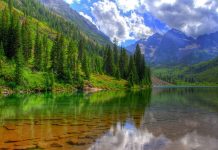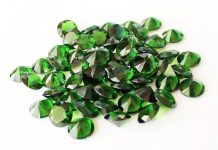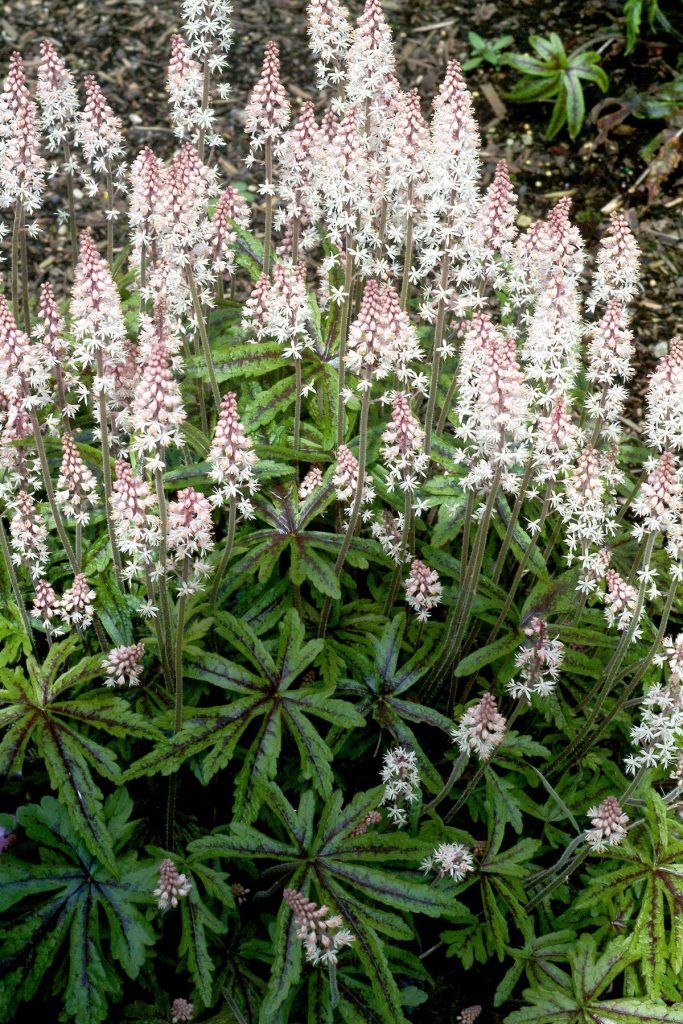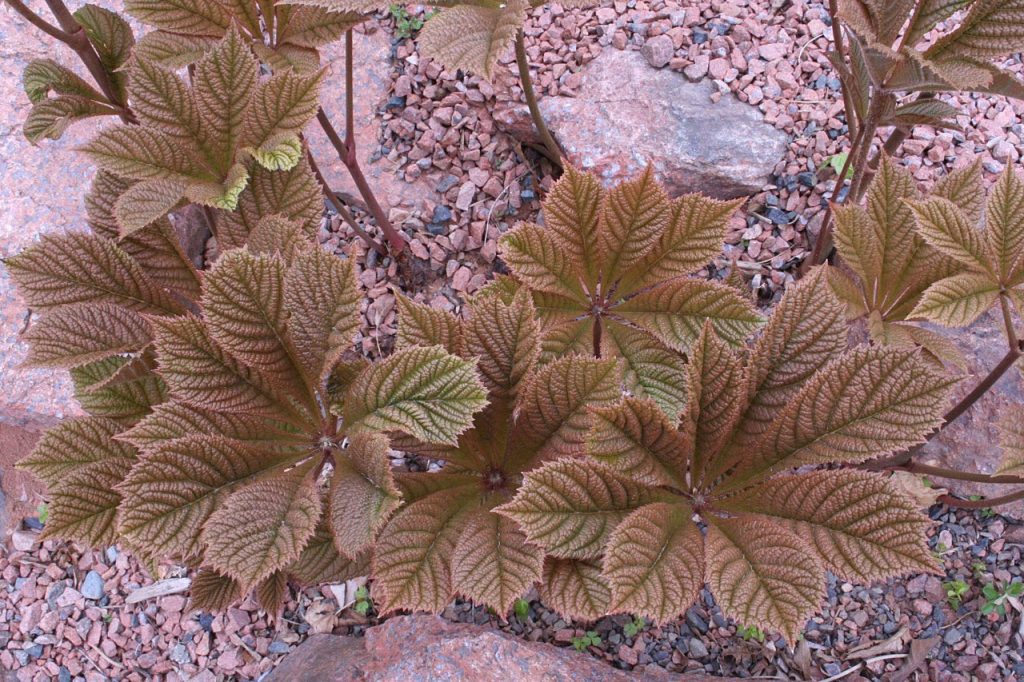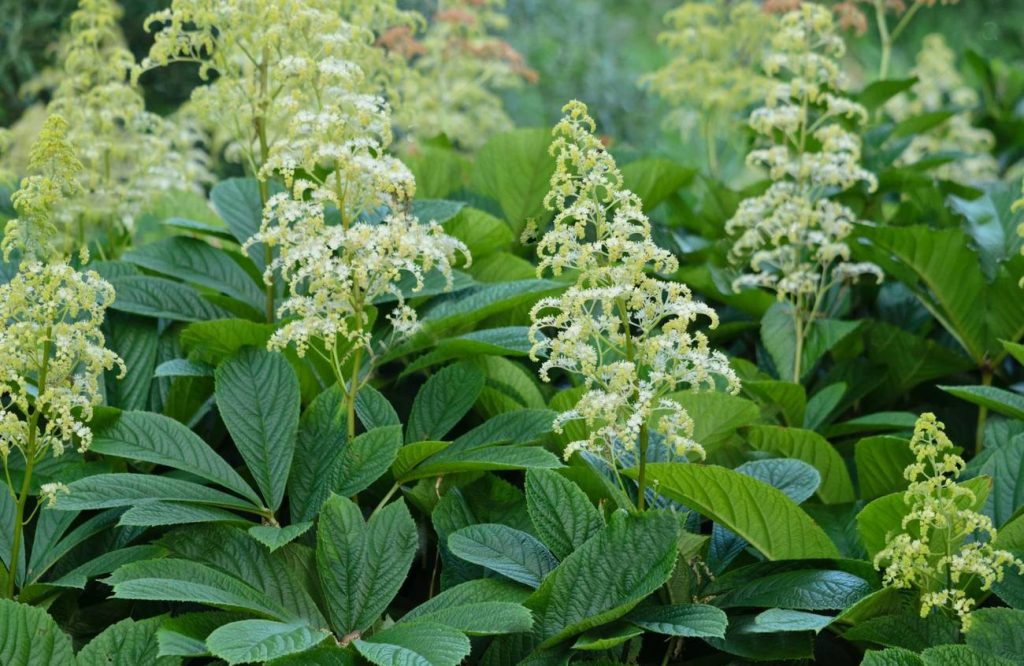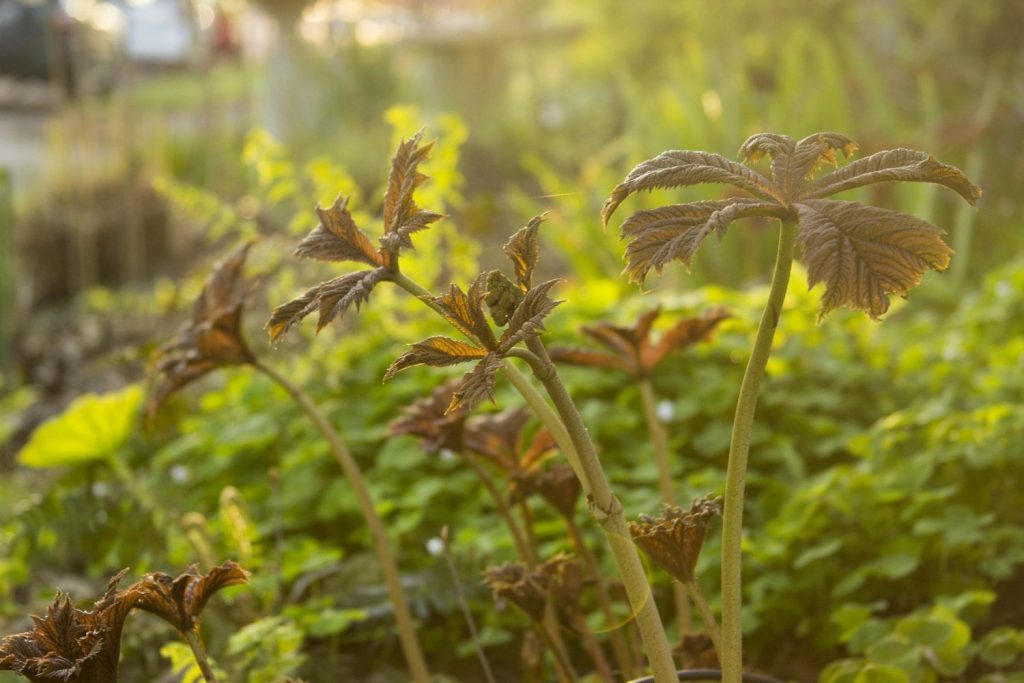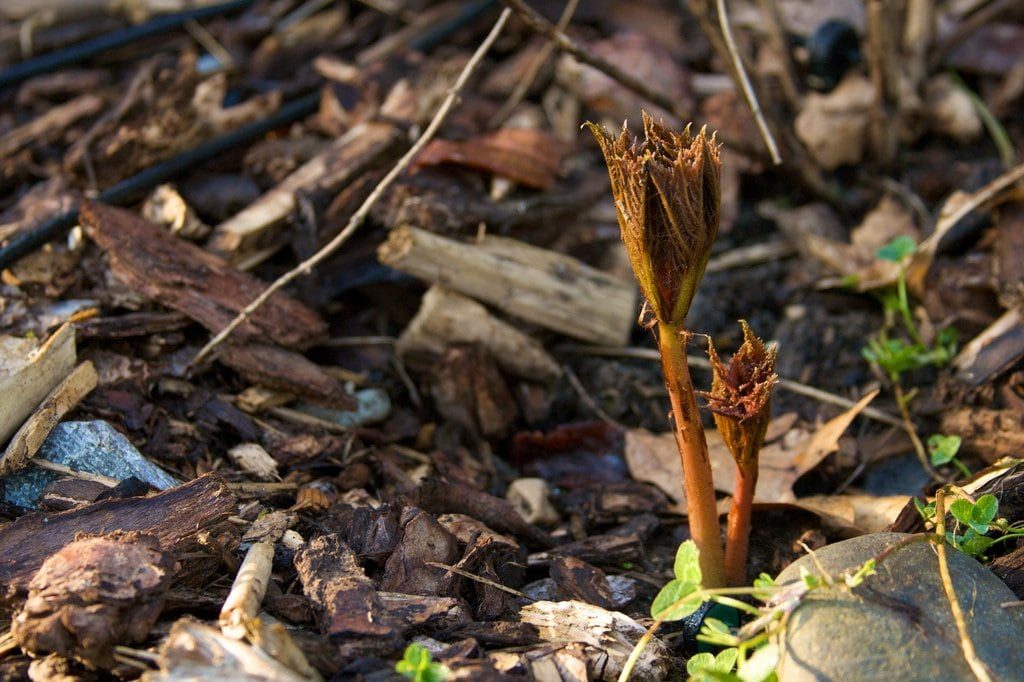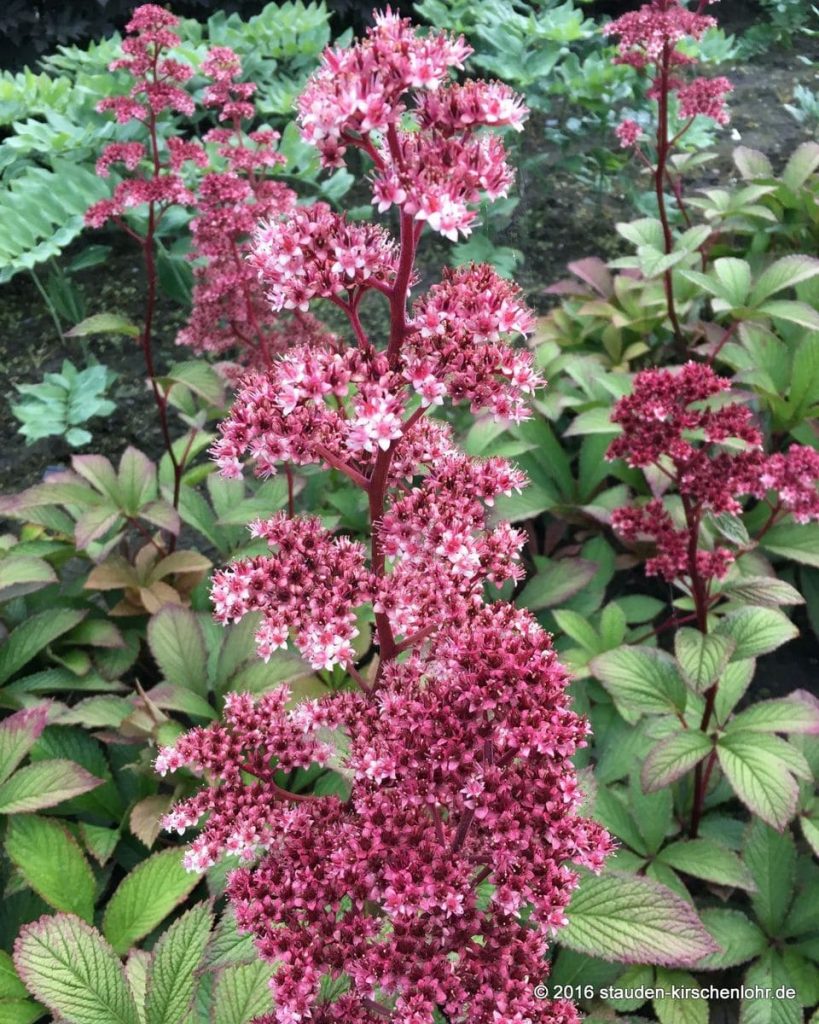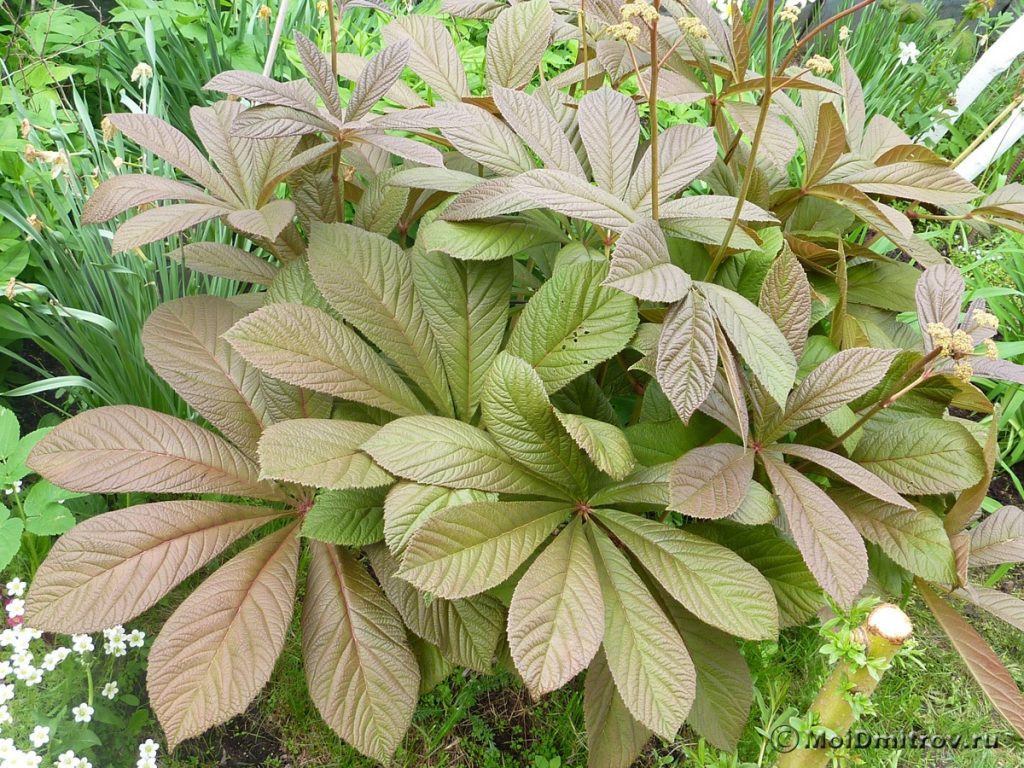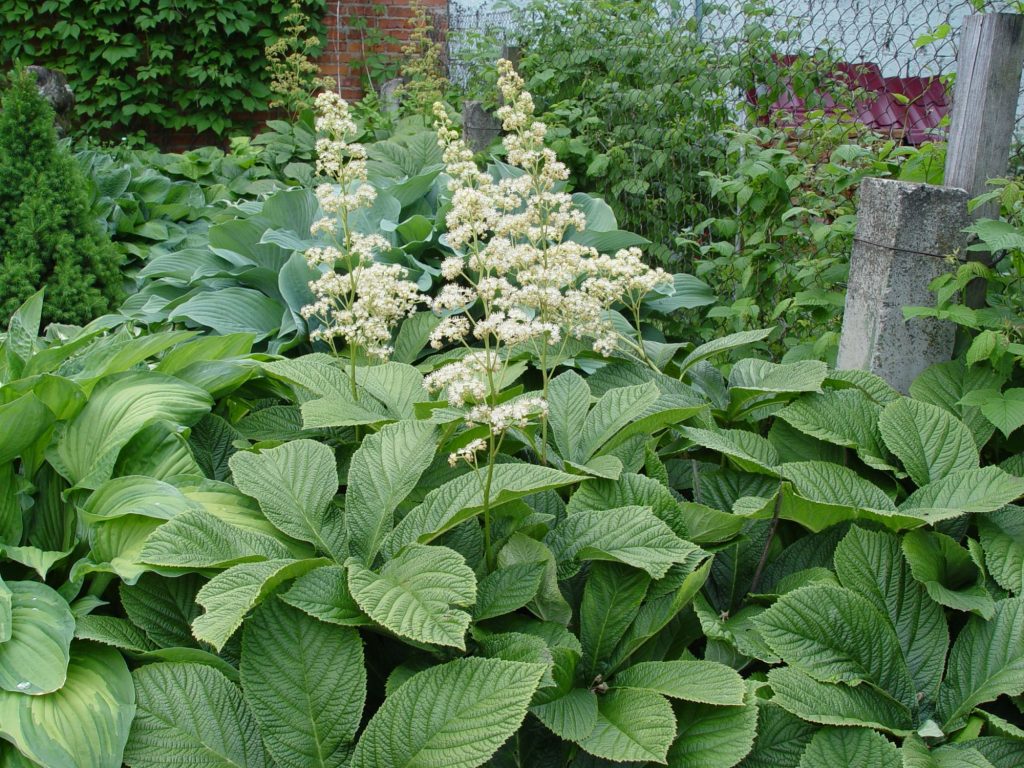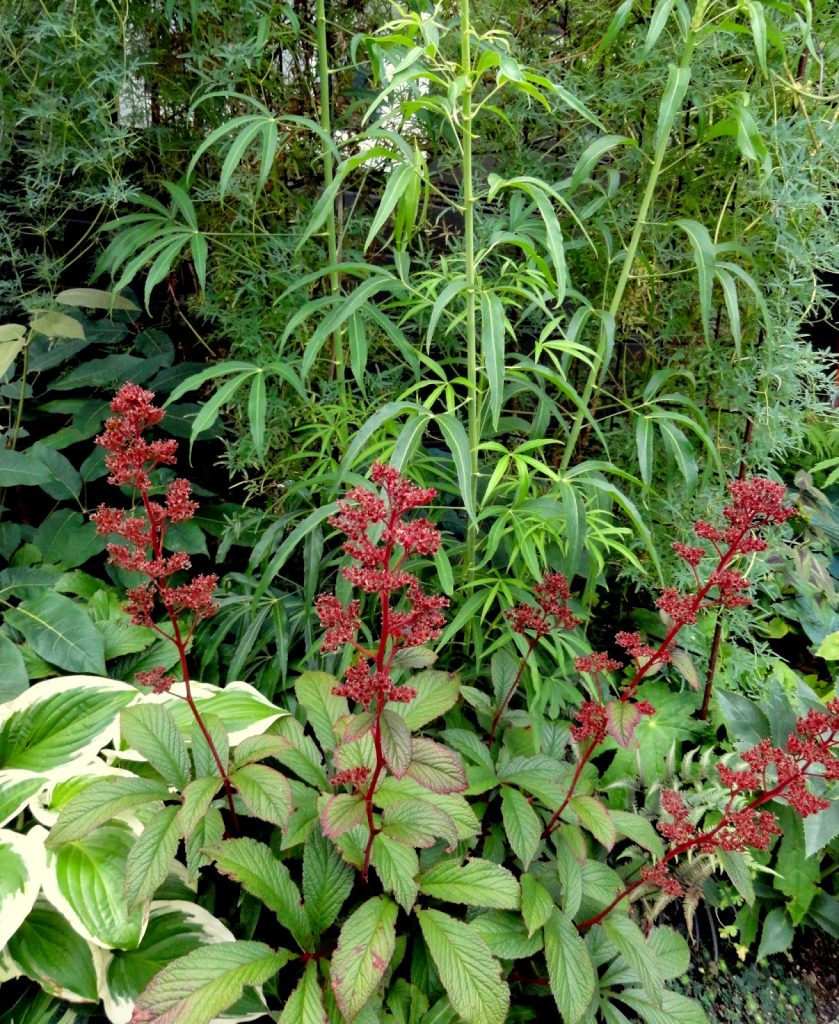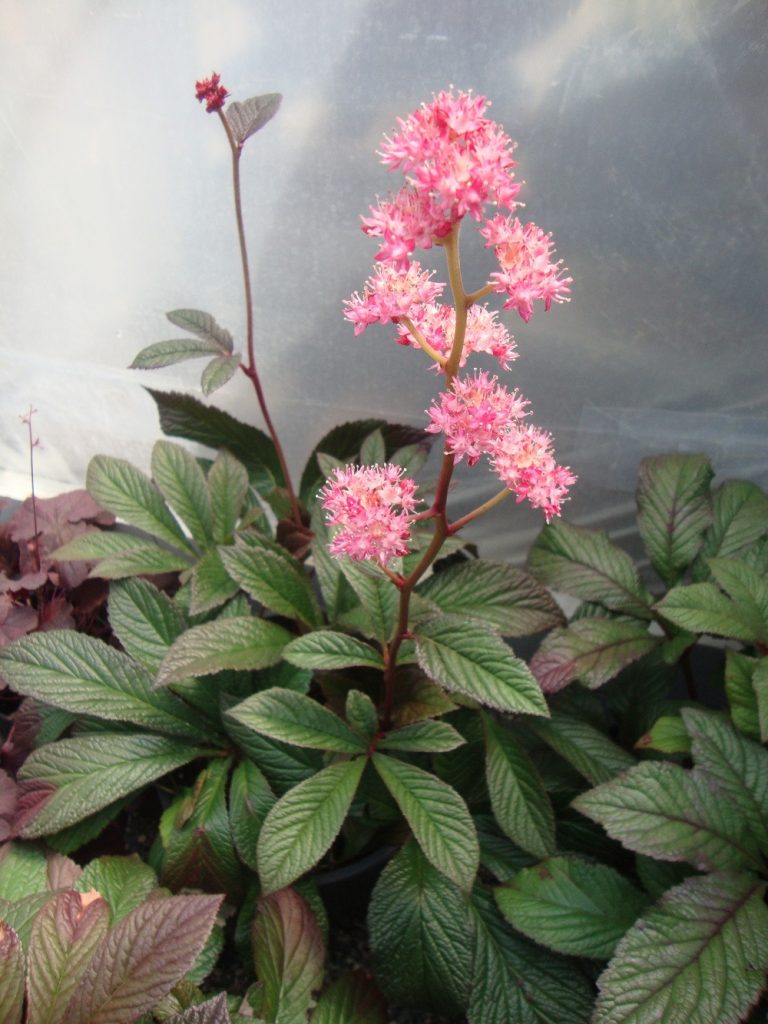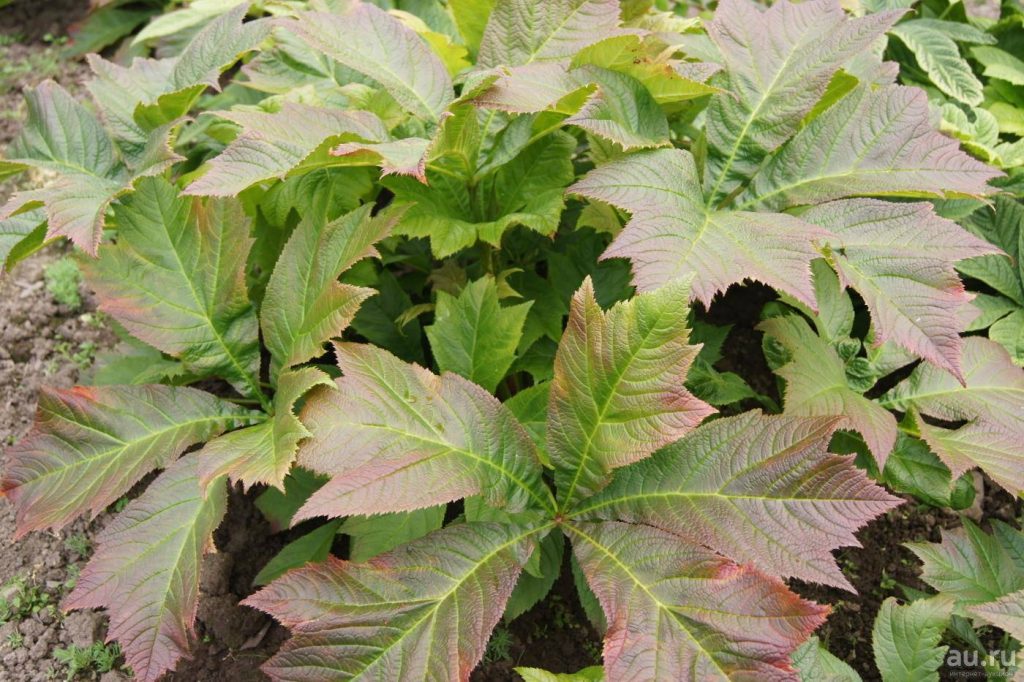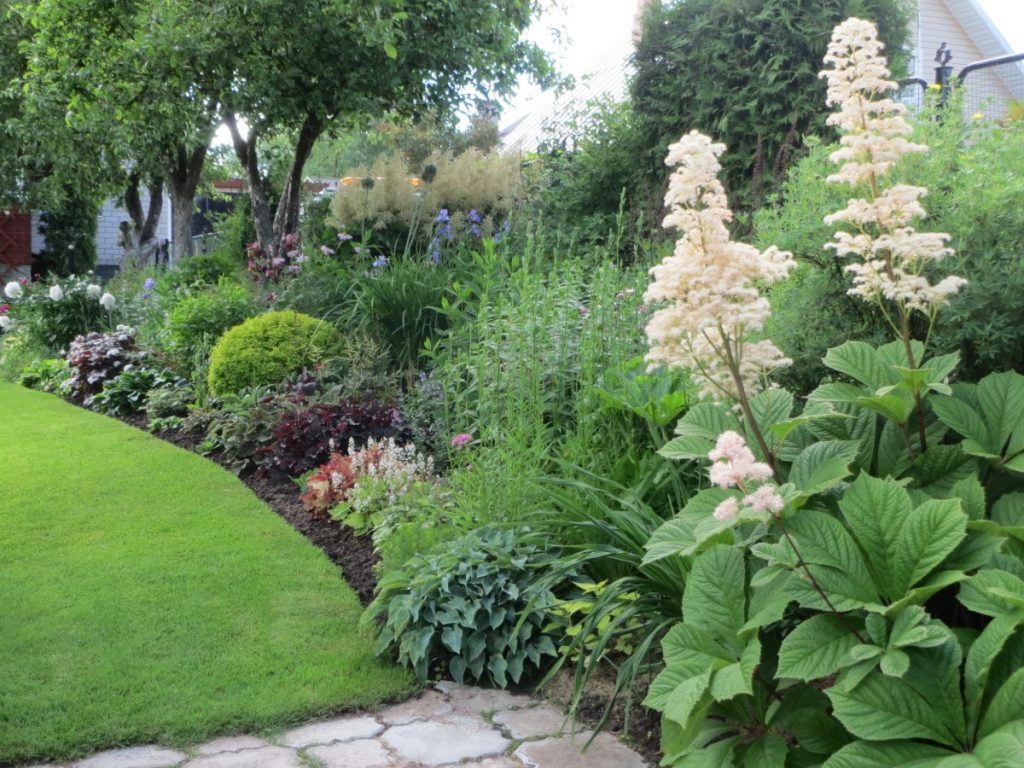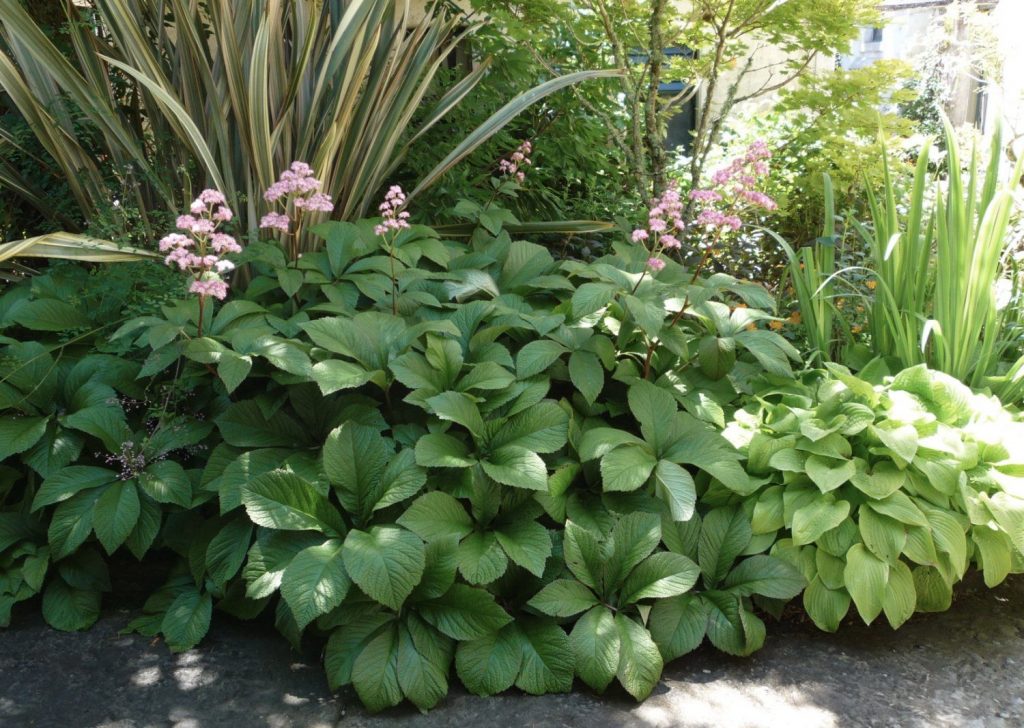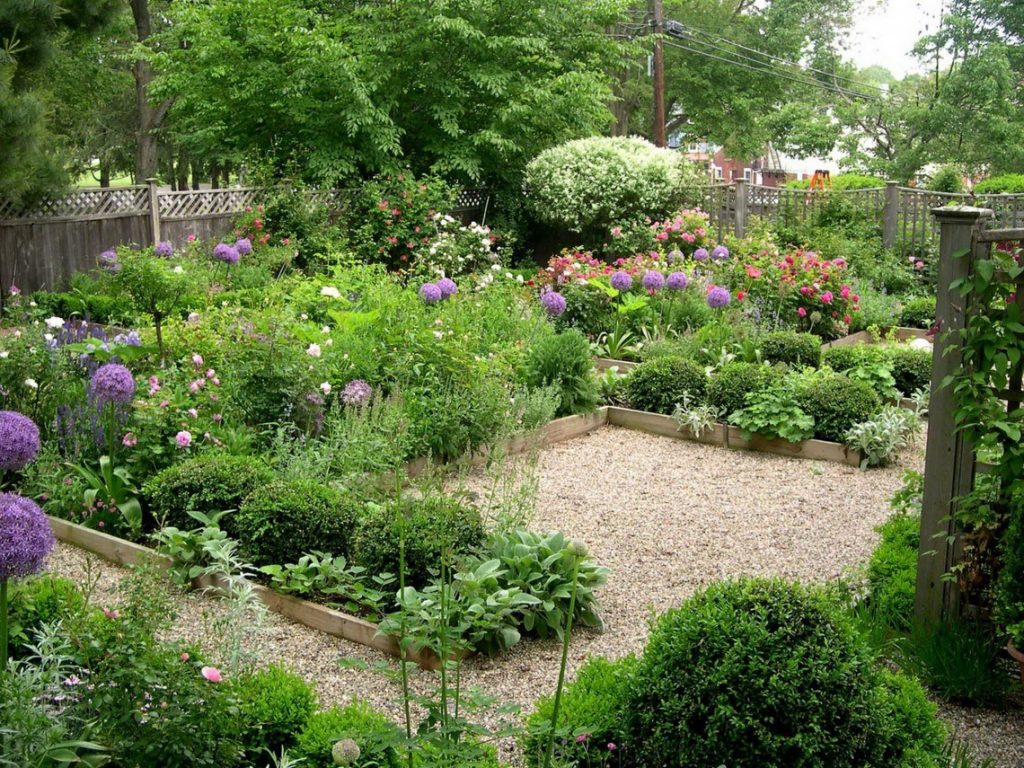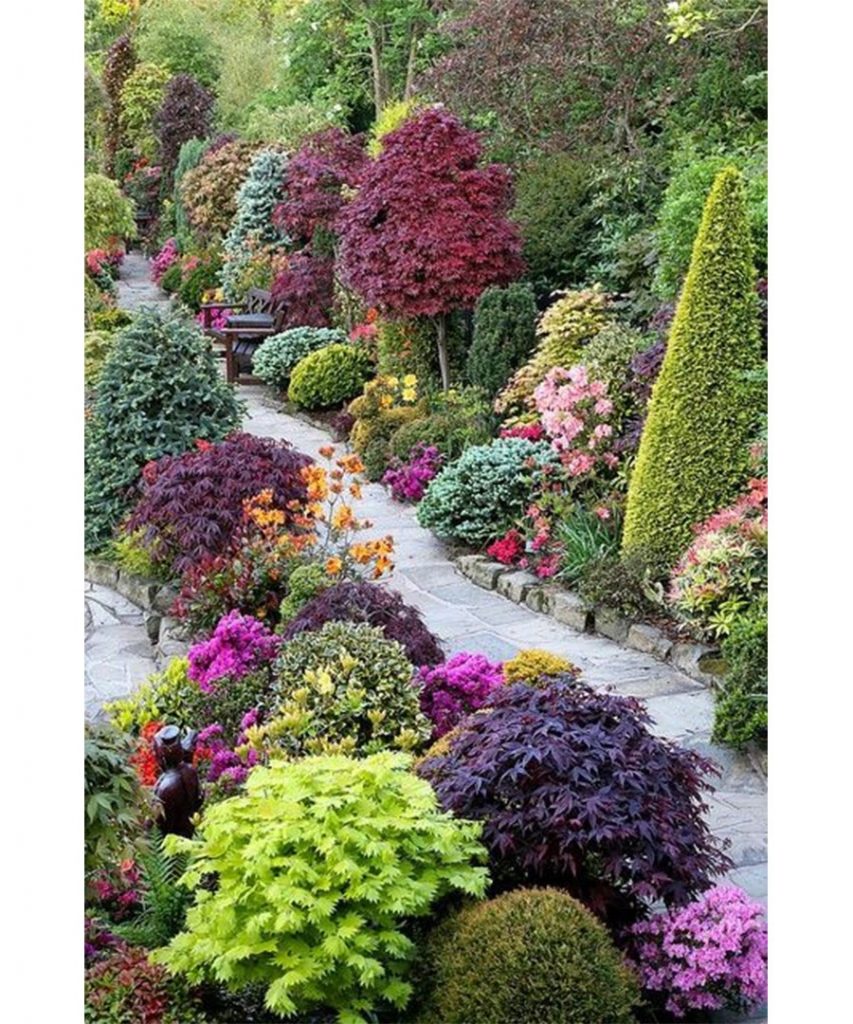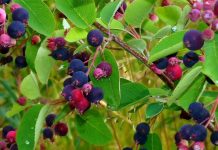Rogersia is a beautiful perennial plant of the stone-hem family with spectacular carved leaves. His homeland is considered to be China, Korea and Japan. Mostly Rogers grows on lawns and banks of freshwater bodies. Today this flower is actively used in landscape design.
Rogers' varieties
In total, the plant has more than 8 varieties, which are mainly found in the homeland of Rogers. The plant has large sheets and small flowers collected in inflorescences of white color. Due to its extraordinary appearance, the flower immediately attracts attention.
The most popular varieties of plants include:
- Rogersia is elderberry. It occurs in the coniferous forests of China. Representatives of this variety grow to 120 cm tall. The name of the variety was due to the similarity of the leaves with elderberry. Flowers have a cream shade and are collected in small panicles. The flowering period at the plant begins in July.
- Rogersiya konskastanolistnaya. In the wild, it can be found in the mountains of China.Its leaves are distinguished by bronze shades. The plant can grow to a height of 140 cm.
- Rogersia feathery. The maximum height of such a plant is about 120 cm. Its leaves have strong petioles, and when they bloom, they turn purple. Small flowers gathered in panicles.
- Rogersia podofillovaya. This type of plant is found in China, Korea and Japan. This variety does not have any special features, except for a large number of embossed veins on the leaves. During blooming, its leaves have a bronze tint, but over time they turn green.
Rogers reproduction
There are several options for plant reproduction: seeds, cuttings and by division.
The most difficult is considered to be the reproduction of plants with seeds. This is due to the fact that in this case a long preparation is required. It is necessary to sow seeds immediately after they are harvested in the fall. At the same time they are buried in the ground to a depth of no more than 2 cm.
Initially, the seed containers are left outside, previously covered from rain. Cold stratification occurs within a few weeks. After 2-3 weeks, the containers are transferred to a room with a temperature of about 11-15 degrees.
You can wait for the first shoots of Rogers in a few weeks. After they grow up to 10 cm tall, they are opened into different pots. In May, this seedling is transferred to the street, but it will be possible to transplant plants into open ground no earlier than September. After transplantation, the plant will bloom only after 3 or even 4 years.
When the Rogersia bush has grown enough, it should be divided. Thus, it is possible not only to propagate the plant, but also to achieve its rejuvenation. This is best done in the spring. The separated part can immediately be planted in open ground. If the bush is divided in autumn, then the plant is dug out for wintering, its roots are cleaned and placed in a special container.
When splitting a bush, you need to ensure that each of the divided parts of the root has at least one growth point. In order to prevent the root from drying out, immediately after separation, it must be planted in a land specially prepared for this.
In the summer you can use the method of propagation by cutting. To do this, the leaf with the stalk must be rooted. To do this, cut the stalk. The cut is processed in a special solution. After that, it can be planted in a light, moist soil.
Only well-established plants should be planted in open ground. At the same time on their roots must be left earthen room.
Rogers landing
Choosing a place for landing Rogers must follow certain rules:
- The plant feels most comfortable in partial shade conditions. Therefore, it cannot be planted in the sun.
- It is important to ensure that the nearby plants do not touch the rogers.
- Since the plant prefers high humidity, it can be planted around water bodies.
- In the place where it is planned to plant a new flower should be a good drainage. Rogers should be watered regularly, but make sure that its roots do not begin to rot.
- Since plants of different species can pollinate among themselves, they need to be placed at a sufficient distance from one another.
- For planting suitable areas, the snow on which hides the last. This is due to the fact that during the spring frosts culture may die.
The soil for planting this flower should be fresh, well laid, cool and wet. It is equally important to protect rojersia from drafts, and its roots from direct contact with moisture.
Before planting, the land should be dug up and fertilized into it (compost, humus or peat). If the soil is clay, add sand or gravel. Planted plants need to a depth of 6-8 cm with a distance of at least 50 cm between plants. Immediately after planting, the plant must be watered.
Care rogersia
This plant is classified as unpretentious, so even a novice can cope with its breeding. The main subtleties of care for Rogers include:
- The plant requires constant watering.
- During dry periods, watering can be alternated with spraying.
- Soil mulching can be used when it is necessary to prevent the active evaporation of moisture.
- If during planting the soil was well fertilized, the plant does not need a special top-dressing.
- Rogers can carry great frosts, but for the winter, it should be prepared gradually.
- Rogersia practically does not suffer from various diseases, since it is itself a natural antiseptic.
Rogersia in landscape design
Due to its simplicity, Rogers are often used by landscape designers to decorate homestead territories. Here are just some examples of its use.
Rogers is valued by gardeners for its attractive appearance and simplicity in the course. Properly preparing a place and soil for it, as well as ensuring regular watering, the plant will delight you with incredible flowering for a very long time.






















